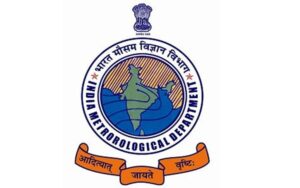Fodder training reaches 7,400 dairy farmers results in increase in average daily milk yield of hybrid as well as Gir cows
Pune: 26th May: It is said – Garbage in, garbage out. This applies to cattle as well and has a strong bearing on their health, productivity and the input costs of animal husbandry. Trainings and demos, including guidance on fodder inputs, are regularly imparted by Jankidevi Bajaj Gram Vikas Sanstha (JBGVS) – a NGO promoted by Bajaj Group – as a part of its Kamdhenu Gopalan Project in Pune, Aurangabad and Wardha districts to the beneficiaries of hybrid, Gir and Gaolao cows distributed. Till now, JBGVS has not only reached out to 7,400 farmers through 336 programs, but also improved the average daily milk yield of both hybrid and Gir cows over the past couple of years by 5-6 litres.
Focus on local and homemade inputs
During the training that is mandatory for the shortlisted beneficiaries and is also open to other dairy farmers; the focus is on homemade and locally available inputs, among other aspects. If a substantial part of the fodder is from their own agriculture residue, farmers get the dual benefits of low costs and chemical free inputs. Sometimes, outside inputs like organic concentrated cattle feed can be added to the menu. The trainings build up on the traditional methods of making fodder as well as explain some new techniques. Commenting on the issue, V B Sohoni, Secretary, JBGVS, said, “Just like humans, animals also need proper nutrition and a balanced diet. A combination of green and dry fodder and value added cattle feed, together adding up to about 25-30 kg daily, along with sufficient water, ensures good productivity.”
In a recent training and demo session in Gangapur taluka of Aurangabad district, the experts stressed on locally available inputs like stalks of sorghum, pearl millet, wheat and sugarcane and the techniques of how these can be grinded and processed into nutritious fodder. Jaggery and salt are also added in case of wheat stalks. S B Kale, Consulting Livestock Supervisor (Aurangabad), JBGVS, said, “The oil cakes available in the market are often laced with chemicals and their prices are skyrocketing. In this scenario, using locally available and locally processed fodder has the potential to sustainably increase the profits from animal husbandry.”
Moreover, in order to enable farmers provide green fodder to cattle where it is naturally not available, JBGVS has been conducting training on the hydroponic technique, use of azolla (type of aquatic plants) and growing of grass on available land.
JBGVS fodder matrix
Based on years of experience, JBGVS has developed a model fodder matrix, as seen below. It applies to hybrid cows and Gir cows. The latter require slightly lesser quantities than the hybrid cows. The quantity of fodder required largely depends on the cow’s weight. Gaolao cows’ requirements are the least among the three. This hardy breed daily requires 15-20 litres of water and about 25 kg fodder. The quantity and type of fodder given also depends on the milk giving capacity. If a cow gives less than eight litres of milk, then concentrated cattle feed is not given.
Type of inputs Nature of inputs Daily quantity
Water As per the season 80-100 litres
Green fodder Maize, selected grasses and leaves 15-20 kg
Dry fodder Stalks of sorghum, pearl millet, wheat, sugarcane 6-8 kg
Value added feed Fermented wheat/oil cake or packaged concentrated feed 4-5 kg
Impact on productivity
The trainings and demos, along with other support under Kamdhenu Gopalan Project, are having a positive impact on productivity, according to JBGVS livestock supervisors. For instance, a dairy farmer in Maval taluka of Pune district who owned two hybrid cows two years ago, each yielding 12-15 litres milk daily, was provided with one more cow, fodder training and assistance in model cowshed and bio-gas plant. Using improvised homemade value added feed and the largely organic stalks from his field grown using bio-gas slurry; he made animal husbandry sustainable and bought more cows. As of today, he has 23 milch cows together yielding 400 litres daily. Thus, per cow yield is now about 17 litres in a taluka where the climate is not considered to be conducive for hybrid cows.
There are other examples from Pune district where two years of training and assistance has raised the milk yield. For instance, the yield of a Gir cow rose from 8 litres to 14 litres, of a hybrid cow from 10 to 14 litres and of another hybrid cow from 10 to 17 litres. Thus, the average daily milk yield in normal situations has increased by 5-6 litres per day. A formerly malnourished hybrid cow witnessed increase in milk yield from 7 litres to an exceptionally high 27 litres per day using homemade balanced feed. Similarly, instances of Gaolao cows in Wardha dying in the extreme summers of Vidarbh region due to lack of proper nutrition has reduced substantially in project villages, after JBGVS beneficiaries started following the recommended fodder matrix.








